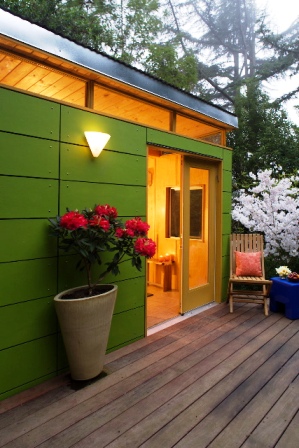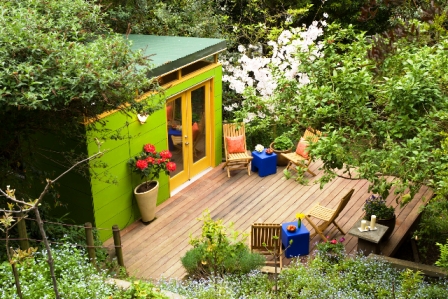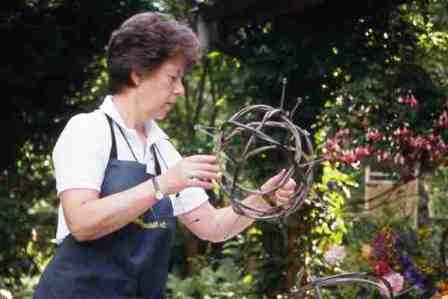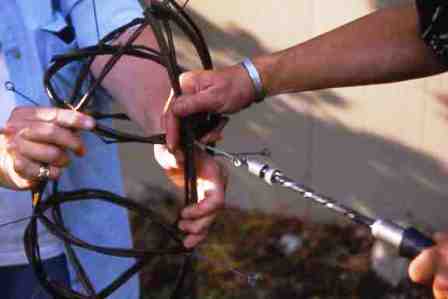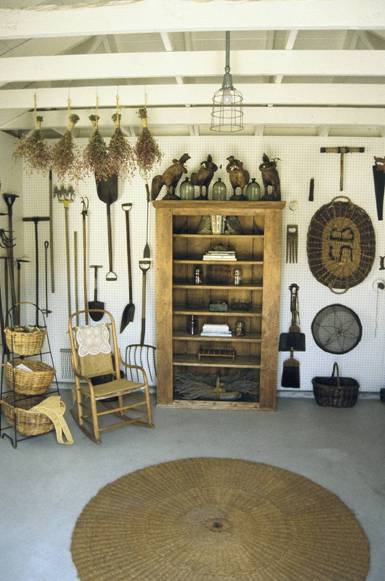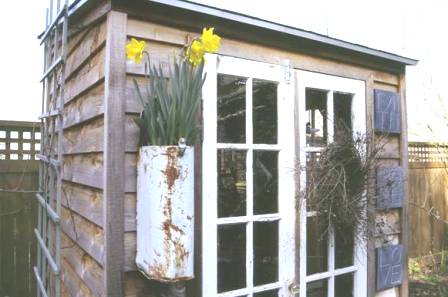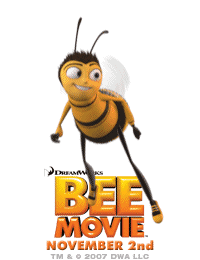Zanny started barking when the FedEx truck arrived at the curb around 11 a.m. today. Little did I know she was announcing the delivery of my advanced copy of Stylish Sheds and Elegant Hideaways!
I opened the padded envelope from Clarkson Potter so quickly that I got a paper cut, but no bother…it was worth the pain because I knew what was inside. What an exciting feeling to hold this volume in my hands, to feel the slick, glossy jacket wrapped around a hardback book bound in two shades of sage green, to flip the pages (c-a-r-e-f-u-l-l-y at the top, right corner, Robyn) and then see Bill Wright’s gorgeous photographs return me to the many magical destinations we’ve visited in the past few years.
How odd, to read the words I wrote with such intensity (and almost always while on a crazy deadline) as they looked up at me in a friendly, familiar way. What a gift to have been able to explore this notion of a separate, backyard destination, and take the journey with so many wonderful shed owners to discover their stories.
There are some very special people to acknowledge, and I’ll be thanking them again and again. First of all, my collaborator and creative partner, Bill Wright, photographer extraordinaire. We had a fun and compatible adventure documenting nearly 40 locations, 28 of which appear in the final book. You don’t really know a person’s true character until you have to work side-by-side with him at 4:30 a.m. (after going to sleep at midnight the night before), schlep photography equipment together, and realize he is letting you be bossy when he really does know what he’s doing! No words can fully explain my gratitude, Bill. We got through Stylish Sheds with only a few “I’m about to kill you” moments — moments that we thankfully laugh about now.
Doris Cooper, our visionary and big-picture editor, believed in this idea. I am grateful that she was willing to trust her gut, trust our creativity and support us as we pursued this dream. I’m ready for the next big thing and hope I can repeat the experience with her at the helm. Marysarah Quinn, the incredibly gifted designer and art director, took a pile of photos and pages of text and conjured up a jewel of a book that really sparkles. All I can say is “wow,” Marysarah. You gave us your best and it feels great to hold the finished evidence in my hands. Finally, a big bouquet of thanks goes to Sarah Jane Freymann, the agent who “gets it,” who represents us so well, and who inspires me, makes me laugh, and gives me hope.
All these accolades will be repeated in two months when our official on-sale date arrives, April 29th. But my birthday is this week, and I’m tickled for the early B-day present.
Thought I’d post a few photographs of the real thing, and share some lines from the introduction, entitled: “Escape to your own backyard.”
. . . The human need for a separate place appears in literature, speaking to the ideal of ‘sanctuary’ in our personal lives. In his book The Poetics of Space, the French philosopher Gaston Bachelard wrote, ‘The recollection of moments of confined, simple, shut-in space are experiences of heartwarming space, of a space that does not seek to become extended, but would like above all still to be possessed . . . [it] is at once small and large, warm and cool, always comforting.’
Bachelard’s thoughts on shelter resonate with me, as do the words of architect Ann Cline, who calls her backyard shed a ‘hut.’ In her book of essays, A Hut of One’s Own, Cline describes a journey taken by many of us (if only in our dreams): ‘Nowadays, the woman – or man – who wishes to experience the poetry of life . . . might be similarly advised to have a hut of her – or his – own. Here, isolated from the wasteland and its new world saviors, a person might gain perspective on life and the forces that threaten to smother it. Only in a hut of one’s own can a person follow his or her own desires – a rigorous discipline . . . . Here, a person may find one’s very own self, the source of humanity’s song.’
This is all lofty stuff, isn’t it? Well, there’s more. After quoting the academic and professional people who inspire me, I needed something solid, rooted to the earth. I turned to carpenter-philosopher, John Akers. A profoundly wise craftsman, John designed and constructed several sheds that appear in our book’s pages, including four structures for Kathy and Ed Fries and one for Edgar Lee. Here’s what John has to say, quoted in the introduction:
“I’ve seen so many situations where people have slowed down because of adding a shed to their property. They experience something intangible when entering their sheds. Maybe it transports them to a simpler time.”
What this carpenter-philosopher has to say makes a lot of sense. The modern shed may be a purely practical solution that expands the square footage of one’s living space, or it may be a simple sanctuary in the garden. But either way, it is a gift. John sums up his observations with a laugh: “I guess you could say my motto is ‘build a shed and change your life.'”
Amen, brother.










